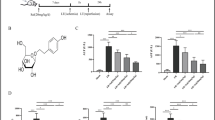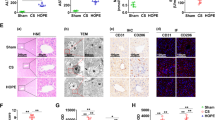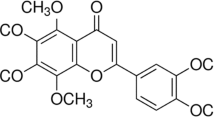Abstract
In the transplant surgery, reactive oxygen species (ROS) from the reperfused tissue cause ischemia-reperfusion injury, resulting in the primary graft failure. We have recently reported that Rho-kinase, an effecter of the small GTPase Rho, plays an important role in the ROS production in the hyperacute phase of reperfusion; however, the sources and mechanisms of the ROS production remain to be elucidated. The aim of this study was to investigate the source of ROS production with a special reference to Rho-kinase to develop a new strategy against ischemia-reperfusion injury. In an in vivo rat model of liver transplantation, Kupffer cells in the graft were depleted using liposome-encapsulated dichloromethylene diphosphonate to examine the source of ROS production. The effect of adenoviral-mediated overexpression of a dominant-negative Rho-kinase (AdDNRhoK) in hepatocytes in the graft was also examined. Kupffer cells were not involved in the ROS production, whereas the AdDNRhoK transfection to hepatocytes significantly suppressed the ROS production. Furthermore, the ROS production was dose-dependently inhibited by apocynin, an NADPH oxidase inhibitor. Expression of DNRhoK also suppressed the release of pro-inflammatory cytokines, and ameliorated the lethal liver injury with a significant prolongation of the survival. These results suggest that the Rho-kinase-mediated pathway plays a crucial role in the ROS production through NADPH oxidase in hepatocytes during the hyperacute phase of reperfusion in vivo. Thus, Rho-kinase in hepatocytes may be a new therapeutic target for the prevention of primary graft failure in liver transplantation.
This is a preview of subscription content, access via your institution
Access options
Subscribe to this journal
Receive 12 print issues and online access
$259.00 per year
only $21.58 per issue
Buy this article
- Purchase on Springer Link
- Instant access to full article PDF
Prices may be subject to local taxes which are calculated during checkout





Similar content being viewed by others
Abbreviations
- ALT:
-
alanine aminotransferase
- AP-1:
-
activator protein-1
- AST:
-
aspartate aminotransferase
- Cl2MDP:
-
dichloromethylene diphosphonate
- COX:
-
cycloxygenase
- IL-1β:
-
interleukin-1β
- NF-κβ:
-
nuclear factor-κβ
- ROS:
-
reactive oxygen species
- TNF-α:
-
tumor necrosis factor-α
References
Totsuka E, Fung U, Hakamada K, Tanaka M, Takahashi K, Nakai M et al. Analysis of clinical variables of donors and recipients with respect to short-term graft outcome in human liver transplantation. Transplant Proc 2004; 36: 2215–2218.
Strassberg SM, Howard TK, Molmenti EP, Hertl M . Selecting the donor liver: risk factors for poor function after orthotopic liver transplantation. Hepatology 1994; 20: 829–838.
Kiuchi T, Schlitt HJ, Oldhafer KJ, Nashan B, Ringe B, Kitai T et al. Backgrounds of early intragraft immune activation and rejection in liver transplant recipients. Impact of graft reperfusion quality. Transplantation 1995; 60: 49–55.
Granger DN, Rutili G, McCord JM . Superoxide radicals in feline intestinal ischemia. Gastroenterology 1981; 81: 22–29.
McCord JM . Oxygen-derived free radicals in postischemic tissue injury. N Engl J Med 1985; 312: 159–163.
Caldwell-Kenkel JC, Thurman RG, Lemasters JJ . Selective loss of nonparenchymal cell viability after cold ischemic strage of rat livers. Transplantation 1988; 45: 834–837.
Imamura H, Sutto F, Braut A, Huet PM . Role of Kupffer cells in cold ischemia/reperfusion injury of rat liver. Gastroenterology 1995; 109: 189–197.
Jaeschke H, Farhood A . Neutrophil and Kupffer cell-induced oxidant stress and ischemia-reperfusion injury in rat liver. Am J Physiol 1991; 260: G355–G362.
Caldwell-Kenkel JC, Currin RT, Coote A, Thurman RG, Lemasters JJ . Reperfusion injury to endothelial cells after cold storage of rat livers: protection by mildly acidic pH and lack pf protection by antioxidants. Transpl Int 1995; 8: 77–85.
Shibuya H, Ohkohchi N, Seya K, Satomi S . Kupffer cells generate superoxide anions and modulate reperfusion injury in rat livers after cold preservation. Hepatology 1997; 25: 356–360.
Ozaki M, Deshpande SS, Angkeow P, Bellan J, Lowenstein CJ, Dinauer MC et al. Inhibition of Rac1 GTP ase protects against nonlethal ischemia/reperfusion-induced necrosis and apoptosis in vivo. FASEB J 2000; 14: 418–429.
Kumamoto Y, Suematsu M, Shimazu M, Kato Y, Sano T, Makino N et al. Kupffer cell-independent acute hepatocellular oxidative stress and decreased bile formation in post-cold-ischemic rat liver. Hepatology 1999; 30: 1454–1463.
Zwacka RM, Zhou W, Zhang Y . Redox gene therapy for ischemia/reperfusion injury of the liver reduces AP1 and NF-kappaB activation. Nat Med 1998; 4: 698–704.
Granger DN . Role of xanthin oxidase and granulocytes in ischemia-reperfusion injury. Am J Physiol 1988; 255: H1269–H1275.
De Groot H, Brecht M . Reoxygenation injury in rat hepatocytes: mediation by O2/H2O2 liberated by sources other than xanthine oxidase. Biol Chem 1991; 372: 35–41.
Curtin JF, Donovan M, Cotter TG . Regulation and measurement of oxidative stress in apoptosis. J Immunol Methods 2002; 265: 49–72.
Shimokawa H . Rho-kinase as a novel therapeutic in treatment of cardiovascular diseases. J Cardiovasc Pharmacol 2002; 39: 319–327.
Shimokawa H, Morishige K, Miyata K, Kandabashi T, Eto Y, Ikegaki I et al. Long-term inhibition of Rho-kinase induces a regression of arteriosclerotic coronary lesions in a porcine model in vivo. Cardiovasc Res 2001; 51: 169–177.
Shimokawa H, Seto M, Katsumata N, Amano M, Kozai T, Yamawaki T et al. Rho-kinase-mediated pathway induces enhanced myosin light chain phosphorylations in a swaine model of coronary artery spasm. Cardiovasc Res 1999; 43: 1029–1039.
Morishige K, Shimokawa H, Eto Y, Kandabashi T, Miyata K, Matsumoto Y et al. Adenovirus-mediated transfer of dominant-negative Rho-kinase induces a regression of coronary arteriosis in pigs in vivo. Arterioscler Thromb Vasc Biol 2001; 21: 548–554.
Mukai Y, Shimokawa H, Higashi M, Morikawa K, Matoba T, Hiroki J et al. Inhibition of renin-angiotensin system ameliorates endothelial dysfunction associated with aging in rats. Arterioscler Thromb Vasc Biol 2002; 22: 1445–1450.
Arai M, Sasaki T, Nozawa R . Inhibition by the protein kinase inhibitor HA1077 (fasudil) of the activation of NADPH oxidase in human neutrophils. Biochem Pharmacol 1993; 46: 1487–1490.
Higashi M, Shimokawa H, Hattori T, Hiroki J, Mukai Y, Morikawa K et al. Long-term inhibition of Rho-kinase suppresses angiotensin II-induced Cardiovascular Hypertrophy in rats in vivo. Circ Res 2003; 93: 767–775.
Shiotani S, Shimada M, Suehiro T, Soejima Y, Yoshizumi T, Shimokawa H et al. Involvement of Rho-kinase in cold ischemia-reperfusion injury after liver transplantation in rats. Transplantation 2004; 78: 375–382.
Segain JP, Blétière DR, Sauzeau V, Bourreille A, Hilaret G, Chrystelle CT et al. Rho kinase blockade prevents inflammation via nuclear factor κB inhibition: evidence in Crohn's disease and experimental colitis. Gastroenterology 2003; 124: 1180–1187.
Hiroki J, Shimokawa H, Higashi M, Morikawa K, Kandabashi T, Kawamura N et al. Inflammatory stimuli upregulate Rho-kinase in human coronary vascular smooth muscle cells. J Mol Cell Cardiol 2004; 37: 537–546.
Brass CA, Robert TG . Hepatic free radical production after cold strage: Kupffer cell-dependent and -independent mechanisms in rats. Gastroenterology 1995; 108: 1167–1175.
Sun JZ, Tang XL, Park SW, Qiu Y, turrens JF, Bolli R . Evidence for an essential role of reactive oxygen species in the genesis of late preconditioning against myocardial stunning in conscious pigs. J Clin Invest 1996; 97: 562–576.
DeGroot H, Buittasuer A . Reoxygenation injury in isolated hepatocytes: cell death proceeded conversion of xanthine dehydrogenase to xanthine oxidase. Biochem Biophys Res Commun 1988; 155: 278–282.
Ohkohchi N, Sakurada M, Endoh T, Koyamada M, Katoh H, Koizumi M et al. Role of free radicals and energy synthesis on primary graft nonfunction in liver transplantation. Transplant Proc 1991; 23: 2416–2419.
Zhang Z, Blake DR, stevens CR, Kanczler JM, Winyard PG, Symons MC et al. A reappraisal of xanthine dehydrogenase and oxidase on hypoxic reperfusion injury: the role of NADPH as an electron donor. Free Radic Res 1998; 28: 151–164.
Suh YA, Arnold RS, Lassegue B . Cell transformation by the superoxide-generating oxidase Mox1. Nature 1999; 401: 79–82.
Ghosh S, May MJ, Kopp EB . NF-κB and Rel proteins: evolutionary conserved mediators of immune responses. Annu Rev Immunol 1998; 16: 225–260.
Yoshidome H, Kato A, Edwards MJ, Lentsch AB . Interleukin-10 suppresses hepatic/ischemia reperfusion injury in mice: implications of a central role for nuclear factor κB. Hepatology 1999; 30: 203–208.
Rockey D . The cellular pathogenesis of portal hypertension: stellate cell contractility, endothelin, and nitric oxide. Hepatology 1997; 25: 2–5.
Hattori T, Shimokawa H, Higashi M, Hiroki J, Mukai Y, Kaibuchi K et al. Long-term treatment with a specific Rho-kinase inhibitor suppresses cardiac allograft vasculopathy in mice. Circ Res 2004; 94: 46–52.
Itoh K, Yoshioka K, Akedo H, Uehata M, Ishizaki T, Narumiya S . An essential part for Rho-associated kinase in the transcellular invasion of tumor cells. Nat Med 1999; 5: 221–225.
Hashimoto K, Nishizaki T, Yoshizumi T, Uchiyama H, Okano S, Ikegami T et al. Beneficial effect of FR167653 on cold ischemia/reperfusion injury in rat liver transplantation. Transplantation 2000; 70: 1318–1322.
Kamada N, Calne RY . A surgical experience with five hundred thirty liver transplants in the rat. Surgery 1983; 93: 64.
Van Rooijen N, Kors N, Van de Ende M, Dijkstra CD . Depletion and repopulation of macrophages in spleen and liver of rat after intravenous treatment with liposome-encapsulated dichloromethylene diphosphonate. Cell Tissue Res 1990; 260: 215–222.
Rajagolan S, Kurz S, Munzel T, Tarpey M, Freeman BA, Griendling KK et al. Angiotensin II-mediated hypertension in the rat increases vascular superoxide production via membrane NADH/NADPH oxidase activation: contribution to alterations of vasomotor tone. J Clin Invest 1996; 97: 1916–1923.
Gyllenhammar H . Lucigenin chemiluminescence in the assessment of neutrophil superoxide production. J Immunol Methods 1987; 97: 209–213.
Li Y, Zhu H, Kuppusamy P, Roubaud V, Zweier JL, Trush MA . Validation of lucigenin (bis-N-methylacridinium) as a chemilumigenic probe for detecting superoxide anion radical production by enzymatic and cellular systems. J Biol Chem 1998; 273: 2015–2023.
Herrera B, Murillo MM, Alvarez-Barrientos A, Beltran J, Fernandez M, Fabregat I . Source of early reactive oxygen species in the apoptosis induced by transforming growth factor-beta in fetal rat hepatocytes. Free Radic Biol Med 2004; 36: 16–26.
Shannon M, Bailey E, Christine P, Cunningham CC . Ethanol stimulates the production of reactive oxygen species at mitochondrial complex I and III. Free Radic Biol Med 1999; 27: 891–900.
Kim JA, Lee YS . Role of reactive oxygen species generated by NADPH oxidase in the mechanism of activation of K(+)-Cl(−)-cotransport by N-ethylmaleimide in HepG2 human hepatoma cells. Free Radic Res 2001; 35: 43–53.
Shaked A, Csete ME, Drazan KE, Bullington D, Wu E, Busuttil RW et al. Adenovirus-mediated gene transfer in the transplant setting. Transplantation 1994; 57: 1508–1511.
Fukata Y, Kimura K, Oshiro N, Saya H, Matsuura Y, Kaibuchi K . Association of the myosin-binding subunit of myosin phosphatase and moesin: dual regulation of moesin phosphorylation by Rho-associated kinase (Rho kinase) and myosin phosphatase. J Cell Biol 1998; 141: 409–418.
Murohara T, Asahara T, Silver M, Bauters C, Masuda H, Kalka C et al. Nitric oxide synthase modulates angiogenesis in response to tissue ischemia. J Clin Invest 1998; 101: 2567–2578.
Tawadrous MN, Zhang XY, Wheatley AM . Microvascular origin of Laser-Doppler flux signal from the surface of normal and injured liver of the rat. Microvasc Res 2001; 62: 355–365.
Acknowledgements
We thank T Hattori, M Higashi, S Masuda and Y Kubota, Kyushu University Graduate School of Medical Sciences, for excellent technical assistance. This study was supported in part by the grant-in-aid (no. 13357011) and the grant for the 21st Century COE Program from the Japanese Ministry of Education, Culture, Sports, Science and Technology, Tokyo, Japan, and the Program for Promotion of Fundamental Studies in Health Sciences of the Organization for Pharmaceutical Safety and Research of Japan.
Author information
Authors and Affiliations
Corresponding author
Rights and permissions
About this article
Cite this article
Shiotani, S., Shimada, M., Taketomi, A. et al. Rho-kinase as a novel gene therapeutic target in treatment of cold ischemia/reperfusion-induced acute lethal liver injury: effect on hepatocellular NADPH oxidase system. Gene Ther 14, 1425–1433 (2007). https://doi.org/10.1038/sj.gt.3303000
Received:
Revised:
Accepted:
Published:
Issue Date:
DOI: https://doi.org/10.1038/sj.gt.3303000
Keywords
This article is cited by
-
Disengaging the COVID-19 Clutch as a Discerning Eye Over the Inflammatory Circuit During SARS-CoV-2 Infection
Inflammation (2022)
-
Toll-like receptors 2 and 4: initiators of non-septic inflammation in critical care medicine?
Intensive Care Medicine (2010)



